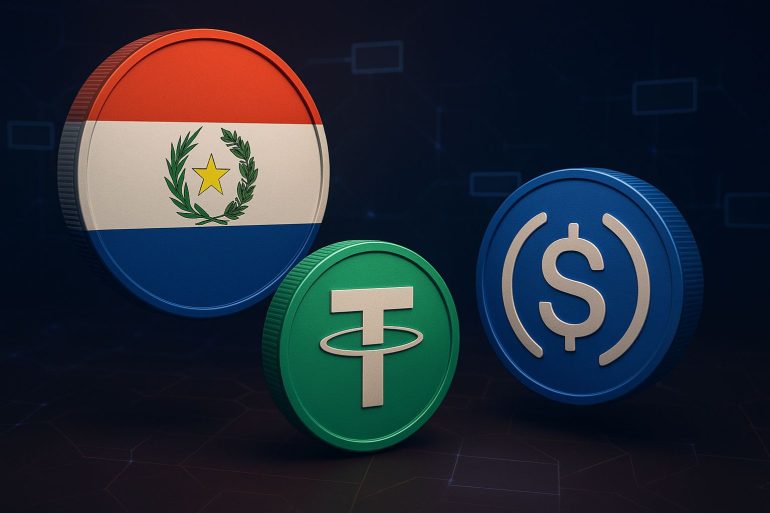For many in Paraguay, especially in it’s capital Asunción and border hubs like Ciudad del Este, daily moves of the guaraní against the United States dollar impact prices for imports, rent, and services. In recent years, a new term has appeared in local, and regional conversations: stablecoin. Once discussed mainly in cryptocurrency circles, stablecoins are now part of broader debates on money transfers, trade, and savings.
In a Paraguayan context, understanding what stablecoins are, and what they are not, is the first step before weighing their potential role. This article is the first in a short The Asunción Times series on stablecoins, remittances, and regulation in the country.
What exactly is a stablecoin?
A stablecoin is a crypto asset designed to keep a stable value relative to a reference asset such as the United States dollar. It is not legal tender and it is not a central bank currency. The United States Securities and Exchange Commission (SEC) reaffirms this view and notes that risks depend on how that stability is maintained.
Most stablecoins are issued by private companies and run on a public ledger called a blockchain. A blockchain is a shared list of transactions kept by many computers at the same time, which makes records hard to change. People can send tokens directly from one wallet app to another without using a bank. The Bank for International Settlements (BIS) explains that this open access can help with payments, but also raises concerns about integrity, including financial crime risks.
Stablecoins: Common designs
Asset backed stablecoins hold reserves of cash or short-term debt. Most circulating stablecoins are issued by a single company and backed by a pool of assets like treasury bills or bank deposits. When users redeem tokens, the issuer uses these reserves to pay out the corresponding fiat money.
Crypto collateralised stablecoins are backed by other crypto assets that are locked in programs on a public ledger called smart contracts. A smart contract is code that automatically applies set rules and can trigger actions when prices move, for example selling collateral if its value falls too far, which keeps the system solvent but can liquidate users.
Algorithmic stablecoins use computer programs to expand or contract supply as prices change. These designs attracted attention in 2022 when TerraUSD collapsed, showing the risks of relying solely on algorithms.
In today’s market, fiat backed stablecoins are by far the most used, with reserves held in highly liquid United States dollar assets. The largest is Tether’s USDT, which drives a large share of blockchain transfers. The second largest is Circle’s USDC, whose issuer has recently applied for a United States national trust bank charter now under review. Crypto collateral designs such as MakerDAO’s DAI are smaller, and algorithmic models have become niche since the TerraUSD failure, which raised broad concerns about that approach.
How currency works in Paraguay
Paraguay’s official currency is the guaraní. The guaraní floats, and its value against the US dollar has gradually weakened over the past decade. World Bank data show that the average official exchange rate was Gs. 7,560 per US$1 in 2024, up from Gs. 6,982 per US$1 in 2022. This trend means imported goods become more expensive when the guaraní loses value. In border cities such as Ciudad del Este, retailers often list prices in dollars, reflecting the importance of the US currency in trade and tourism. Some residents of Paraguay therefore look for ways to hold or send value in dollars without opening a foreign bank account.
Stabelcoins might appear attractive because they promise dollar denominated value and are accessible via smartphone. However, it is important to remember that stablecoins are private instruments, not legal tender. They rely on the issuer’s ability to manage reserves and honor redemptions.
The next piece of the puzzle
Stablecoins, recently discussed at the Paraguay Blockchain Summit 2025, offer a practical way to hold and move value in digital form. With the basics clear, the next article in this series maps how remittances work in Paraguay today, the fees involved, and where stablecoins are being discussed as one possible option.
About the author:
Stijn McAdam is an independent analyst focusing on finance, technology, and geopolitics. A former military and law enforcement officer turned entrepreneur and global investor, he writes about markets, sovereignty, and global shifts in power. He is the author of Fit & Free, Crypto from Scratch, and Trade Smart, and regularly shares insights at stijnmcadam.com.
Episode 2: Can Stablecoins Lower Remittance Costs For Paraguay?
Episode 3: Navigating The Risks And Rules For Stablecoins In Paraguay.
Episode 4: What A Stablecoin Transfer Can Look Like In Paraguay.


